20 dogs that chew the most
Which dogs are the ultimate gnawers? Here are the 20 dogs that chew the most
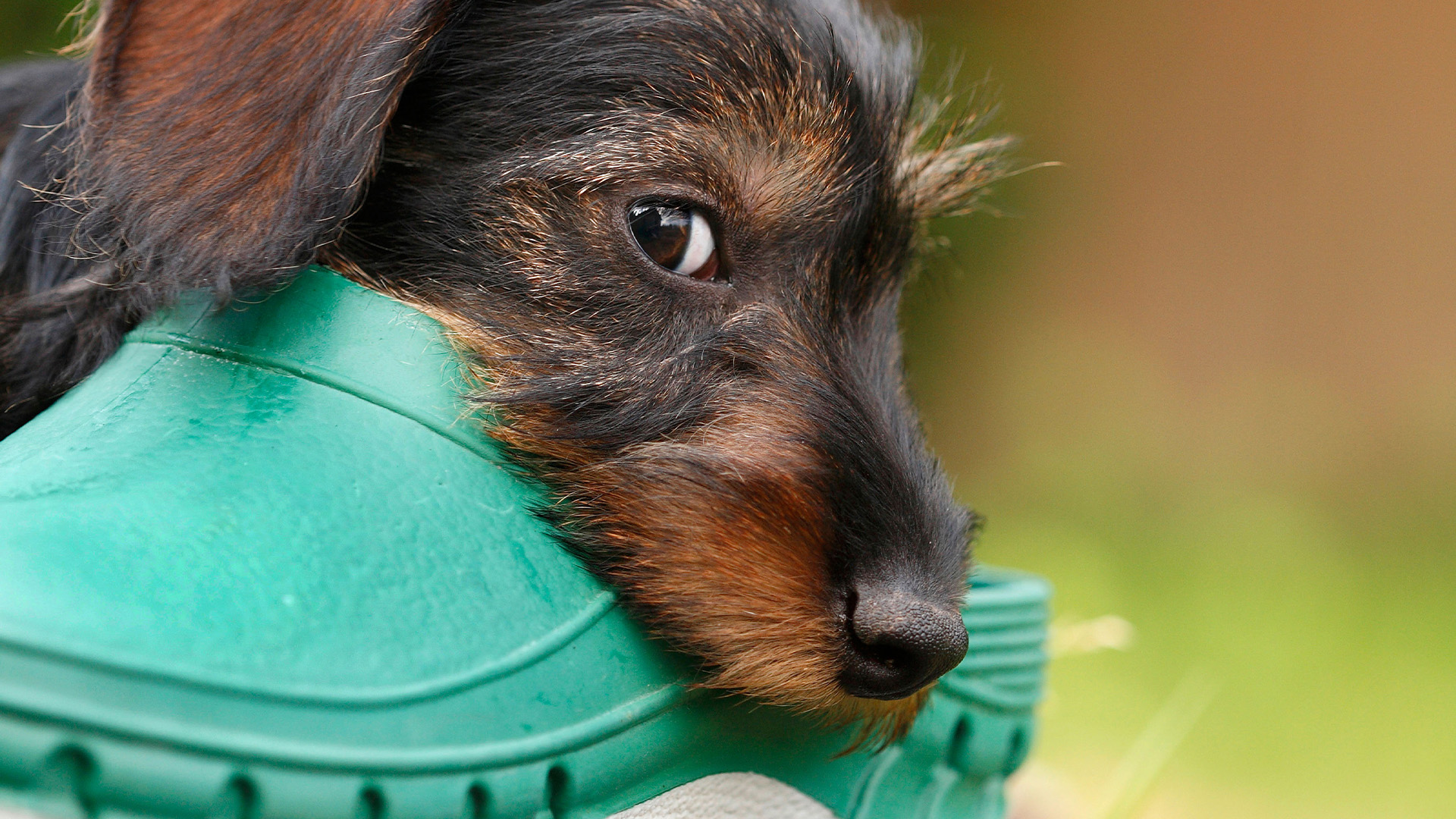
What dogs chew the most? Dogs have an innate instinct to chew, and in fact, it fulfils several useful purposes. From pack survival instincts to oral hygiene, there are many reasons that dogs chew.
Vet, Dr Rebecca MacMillan, says, “In my experience, it tends to be the larger working dogs that chew the most, rather than some of the smaller companion breeds. For example, retriever breeds are bred for carrying things in their mouths, enjoy a good chew. Some large, muscular dogs also enjoy gnawing on things.
“Breeds that are prone to separation anxiety might also chew on things that they perhaps shouldn’t if left alone for too long.
Of course, all dogs are individuals. You may know of dogs on this list that have never chewed anything more than their dinner. Or you may own a dog that isn’t listed here who demolishes everything from your shoes to the table leg. But to find out the breeds most likely to have a strong chewing instinct, read on.
Dogs that chew the most
1. Boxer
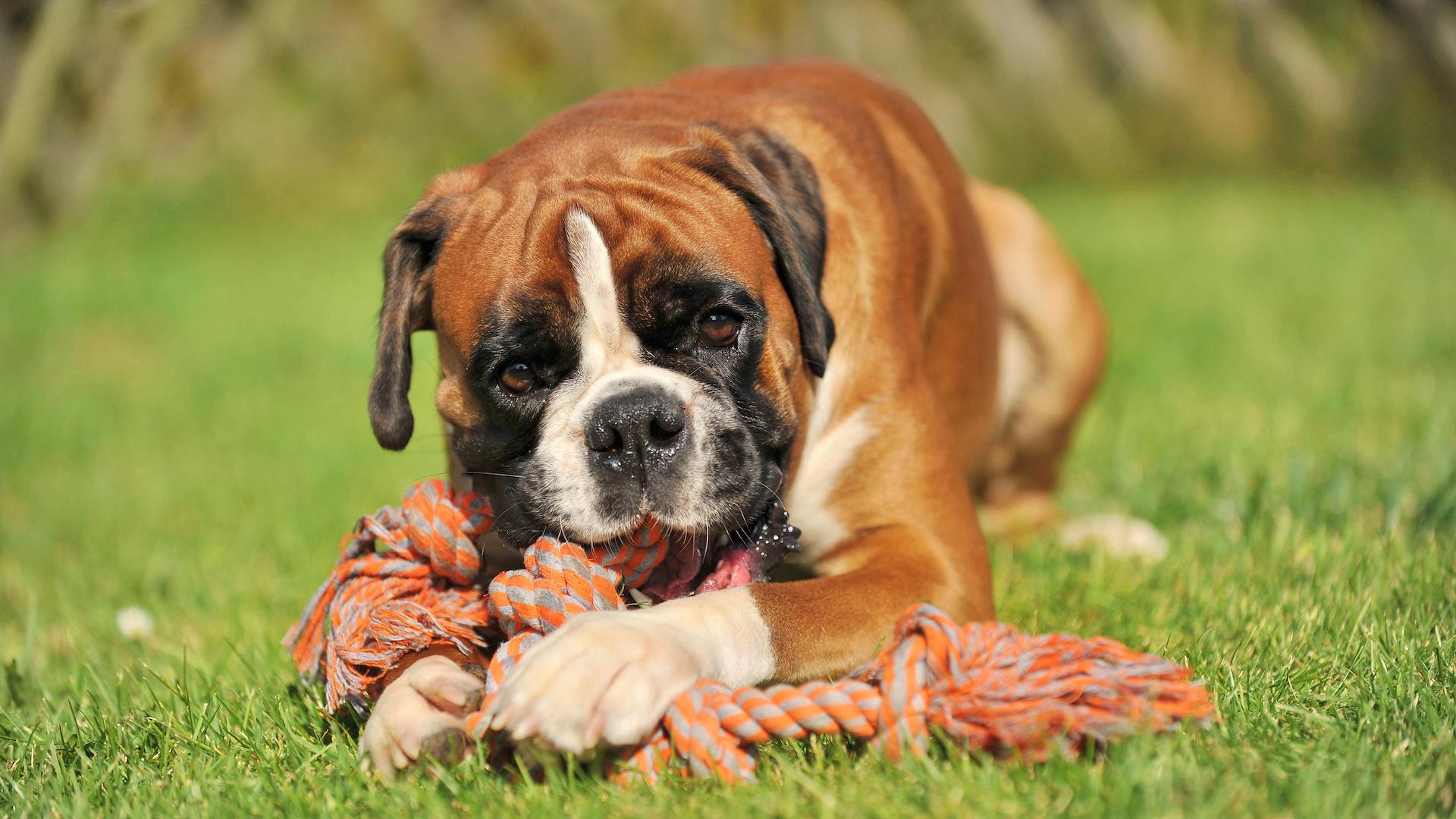
Boxers tend to have a strong urge to gnaw and chew, so they need to be trained from a young age on what is not appropriate to chomp on. They have strong, powerful jaws, and while all puppies tend to be mouthy, boxers often retain this trait as adults.
As an active breed, boxers have a low boredom threshold, which makes them more likely to help themselves to what they may view as a perfect chew toy. Not ideal if it’s your new pair of shoes!
Make sure you keep them well stimulated, with plenty of mental and physical activity, and provide appropriate chew toys on top of training to ensure their love of chewing does not become destructive.
2. Labrador Retriever
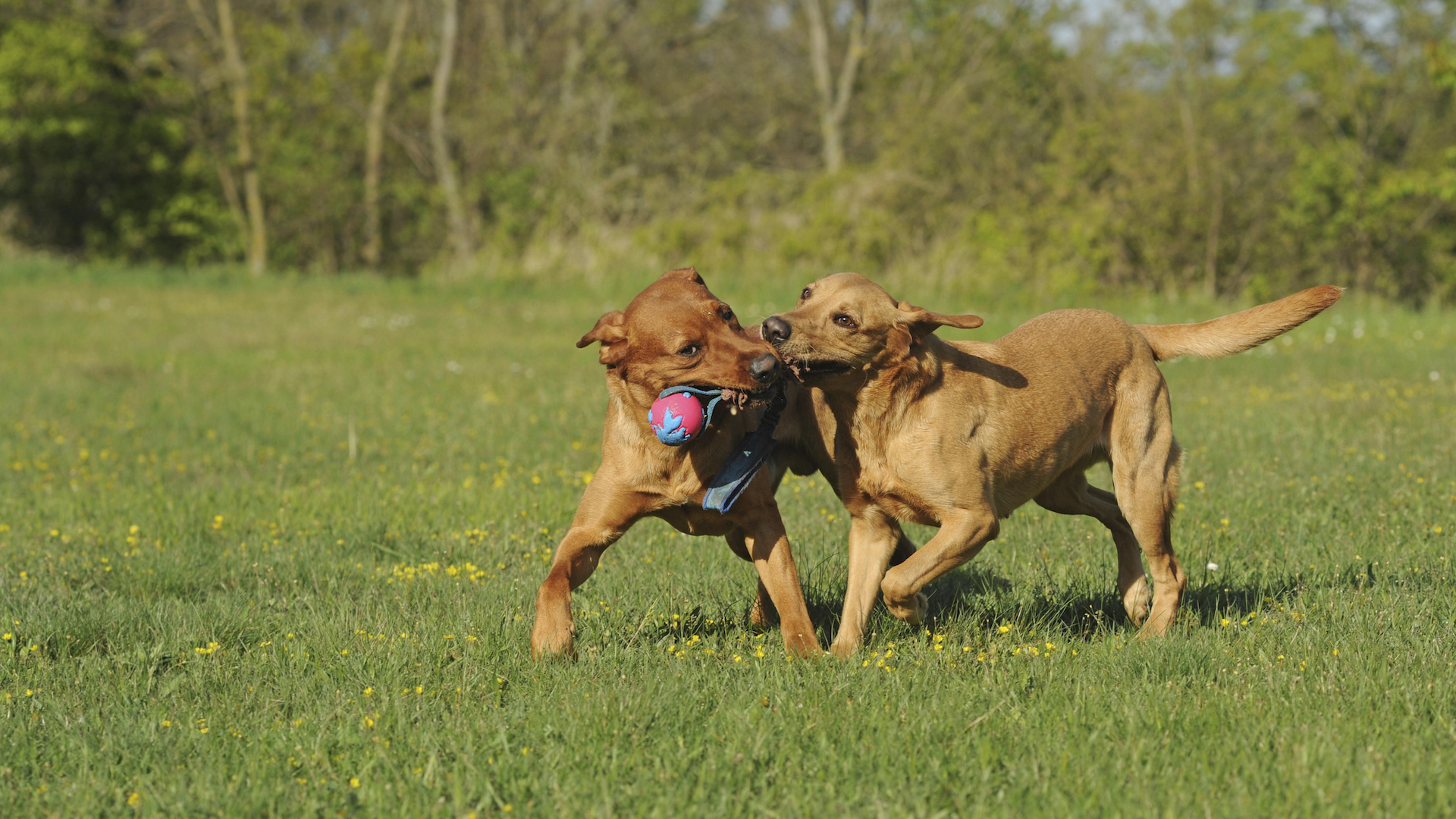
Labrador Retrievers are both playful and highly active, so they love to be kept busy. They have the added trait of being a retrieving gundog, with an innate instinct to pick things up in their mouth.
If they are not sufficiently exercised – both mentally and physically – they may resort to exercising their jaws on whatever they find to chew. This is fine if it’s one of the best durable dog toys, less so if it’s a piece of furniture.
3. Labradoodle
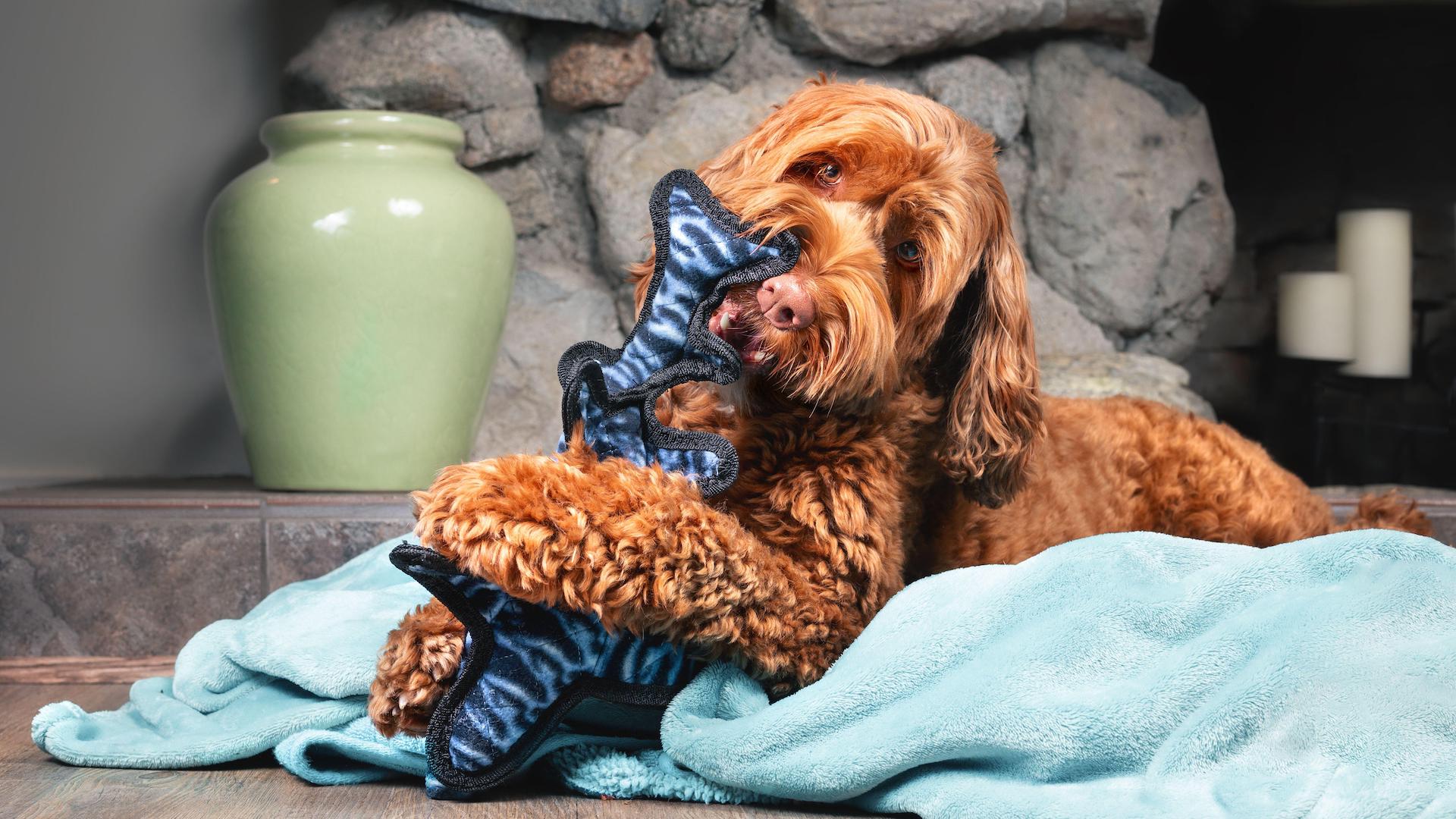
Labradoodles, a cross between a Labrador and a poodle, are exceptionally playful – but also prone to putting everything in their mouth, just like a toddler! Both breeds are intelligent and active, and so they need some outlet for their energy, which can mean demolishing a chew toy if they are insufficiently stimulated.
Labradoodles are also prone to separation anxiety, which can make them more likely to develop destructive tendencies.
4. Jack Russell Terrier
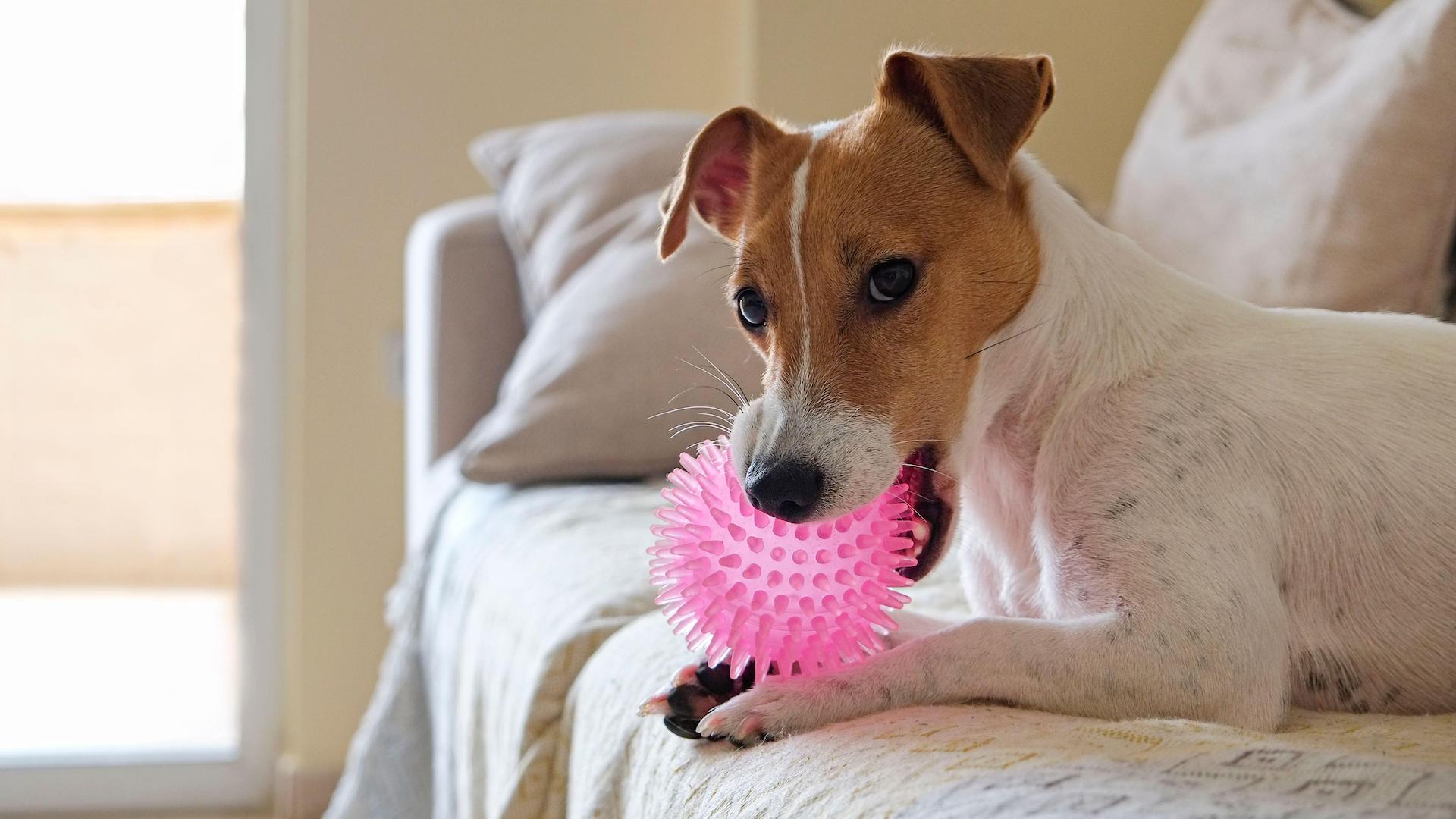
While aggressive chewing is typically more associated with larger breeds, the tenacious Jack Russell Terrier is notorious for grabbing things with its teeth and swiftly demolishing them.
They have bottomless energy, and always need to find ways of using it up. Sometimes they dig furiously, sometimes they yap, and other times they gnaw on anything that will fit within their little jaws!
5. Beagle
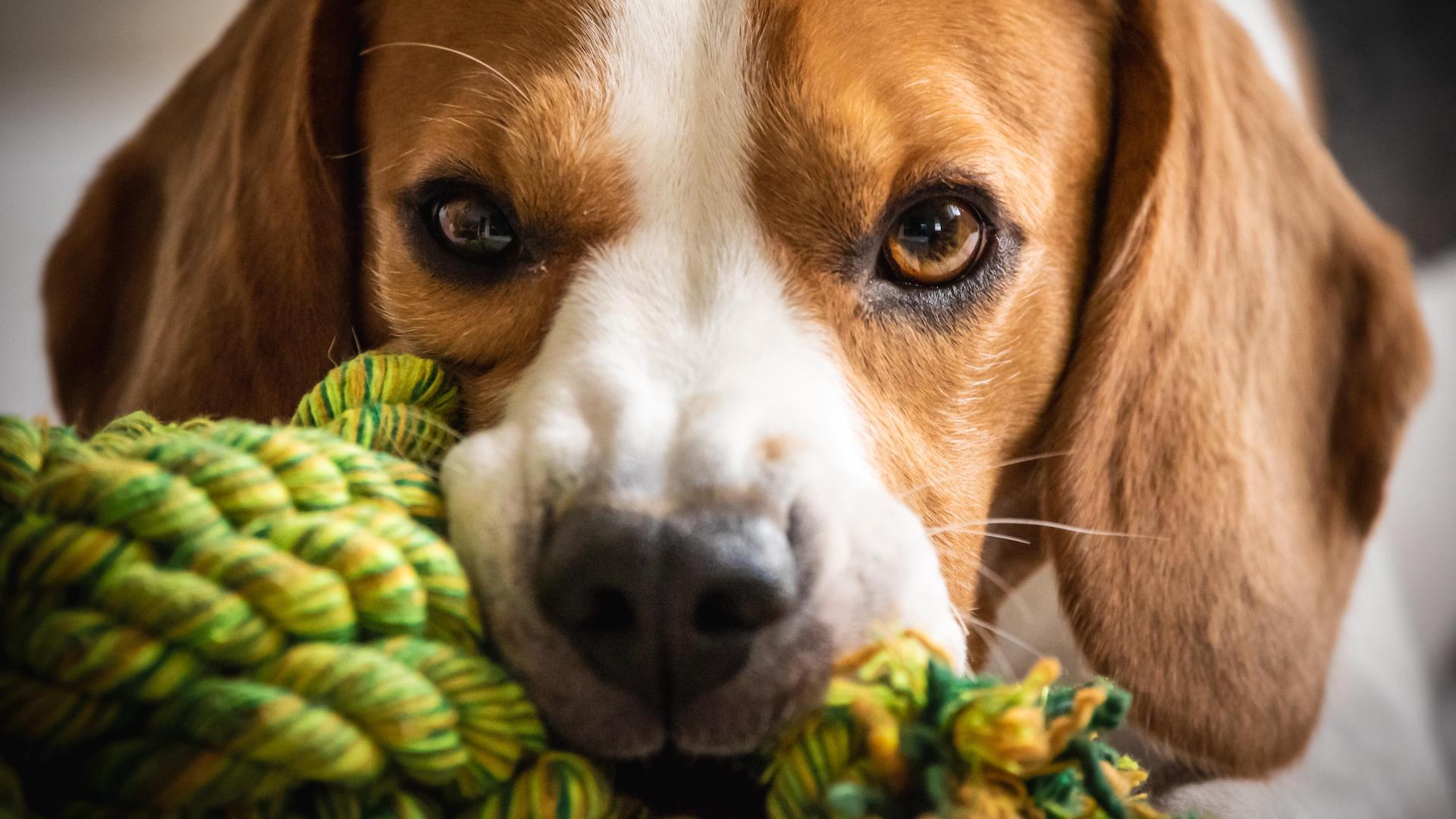
Beagles were originally bred for hunting, and they love putting anything in their mouth – and eating it! – regardless of whether it’s meant to be there. You’ll find they help themselves to shoes, clothing, kids’ toys, and anything else lying around.
They’re curious explorers and need to be taught firmly what is appropriate for their voracious chew instinct.
6. Border Collie
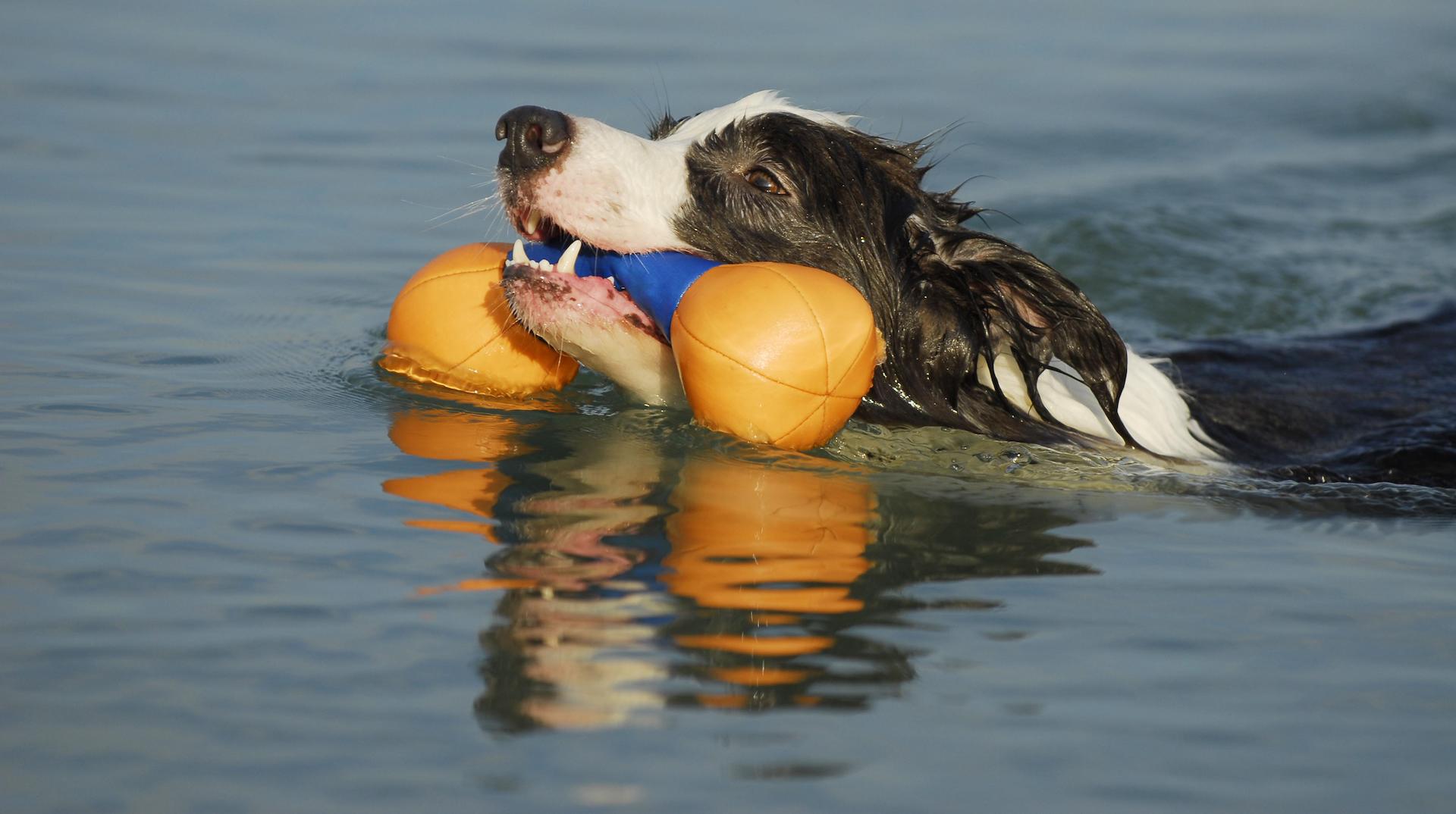
Border Collies are designed to work hard all day long, out on the hills herding sheep. The gentle life of a pet dog can lead them to find ingenious ways to occupy their highly intelligent mind and athletic bodies.
If you don’t ensure these herding dogs are adequately exercised and stimulated, they just might decide it’s time to find out what your sofa is made of, whether they can chew right through a chair leg, or rip apart a slipper. Keep them busy and active, and you’ll be able to divert this propensity for self-amusement.
7. Chihuahua
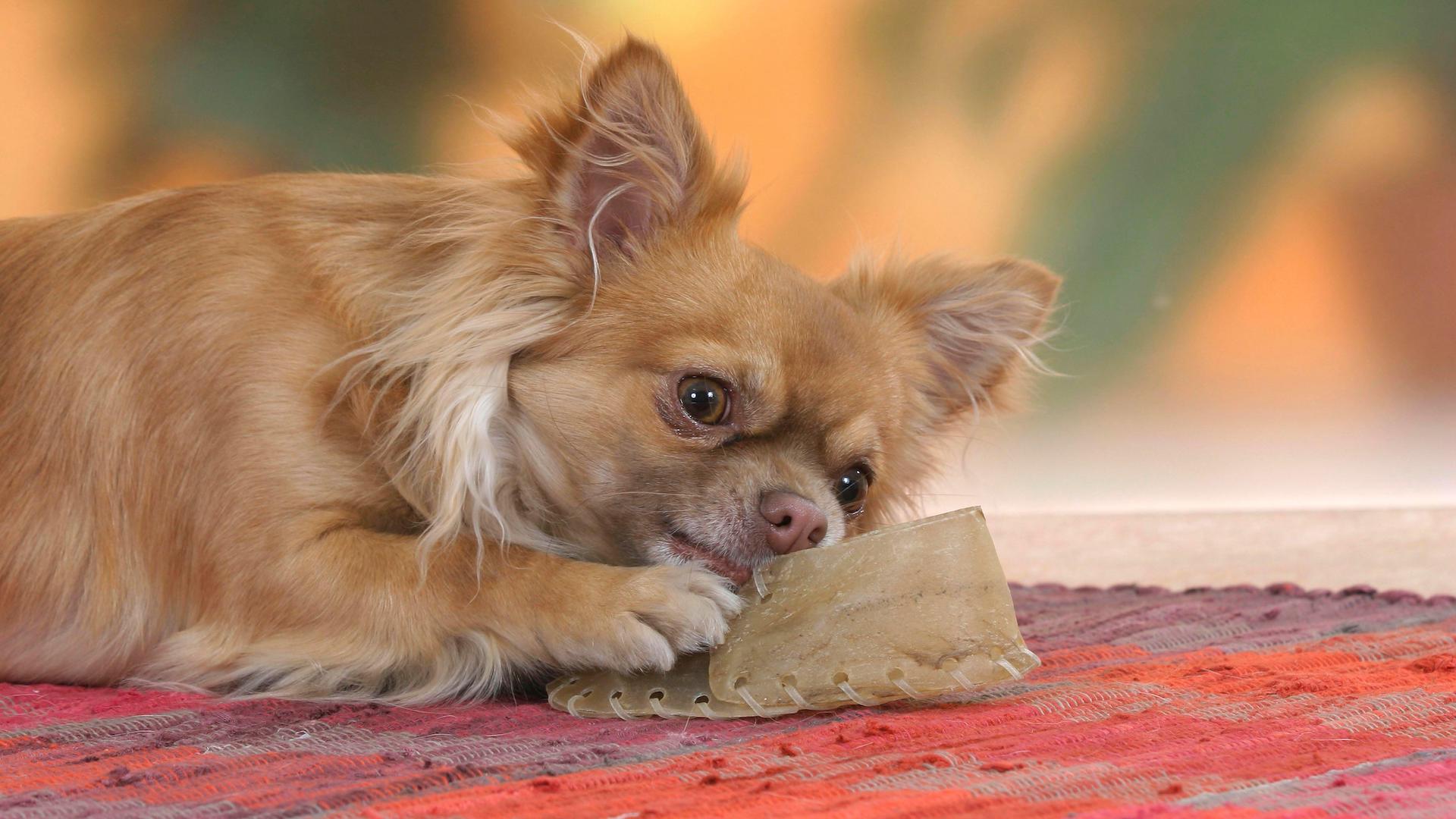
The Chihuahua craves attention, and if they don’t get enough of it, they’ll force you to play with them by indulging in some sort of mischievous activity that’s sure to divert you. They are also prone to separation anxiety and boredom, which means they often chew things for comfort and to give themselves something to do.
And while they only have small jaws and teeth, they’re pretty adept at pulling items apart, so don’t be fooled by those cute little faces.
8. Bulldog
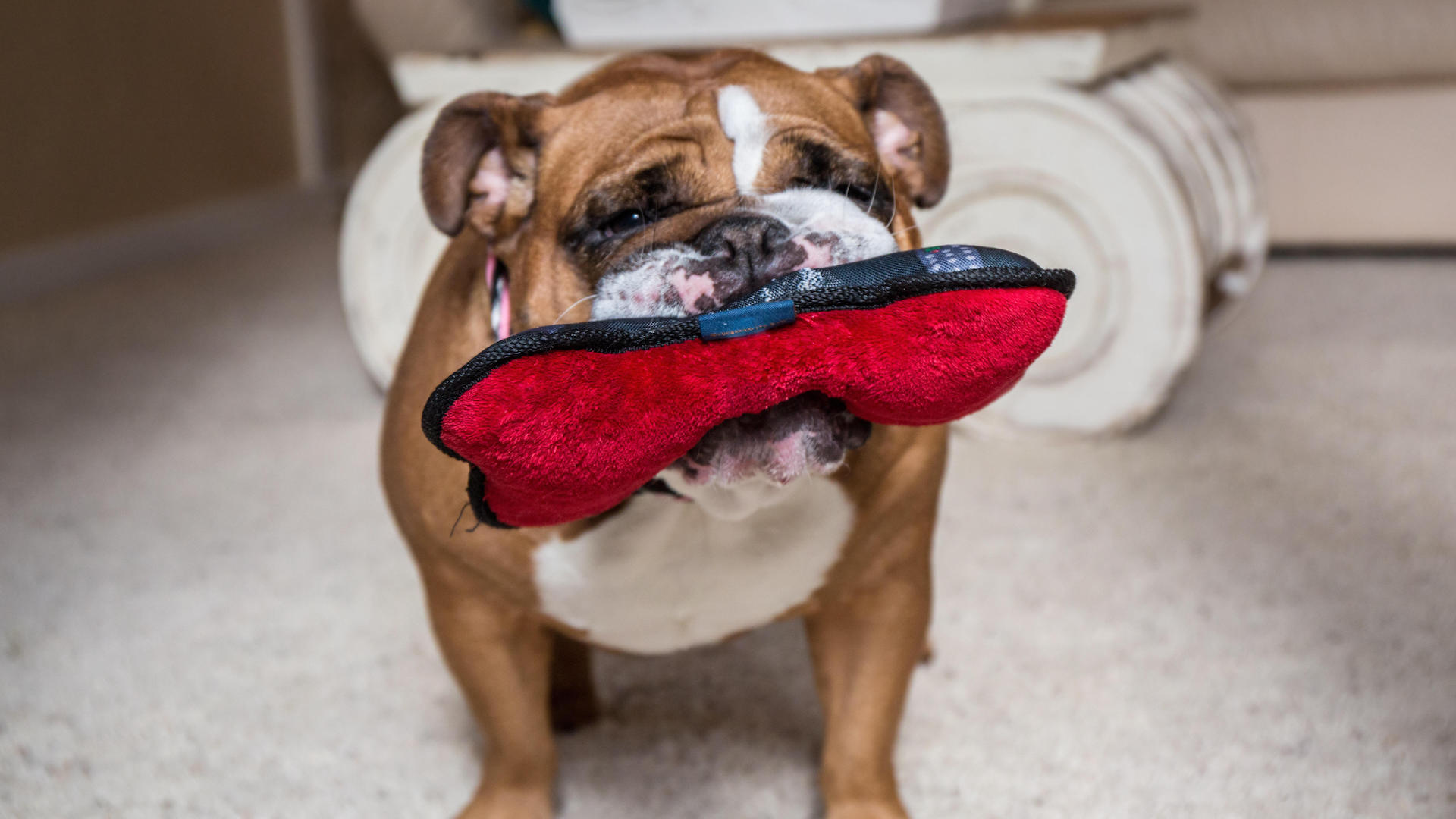
Bulldogs are particularly likely to develop into strong chewers. Some say they suffer relatively more pain in teething than other dogs, which may lead them to continue chewing as adults. It’s even common for bulldogs to gnaw on rocks!
Physically, they have large, strong jaws, dating back from their origins in bull baiting, which means that when they crunch on something, it is quickly destroyed.
Despite their hard-as-nails facade, bulldogs are typically big softies that often suffer from separation anxiety. An outlet for their frustration and to soothe their nerves is often chewing, which could be anything from cushions and rugs to books and furniture.
9. Golden retriever
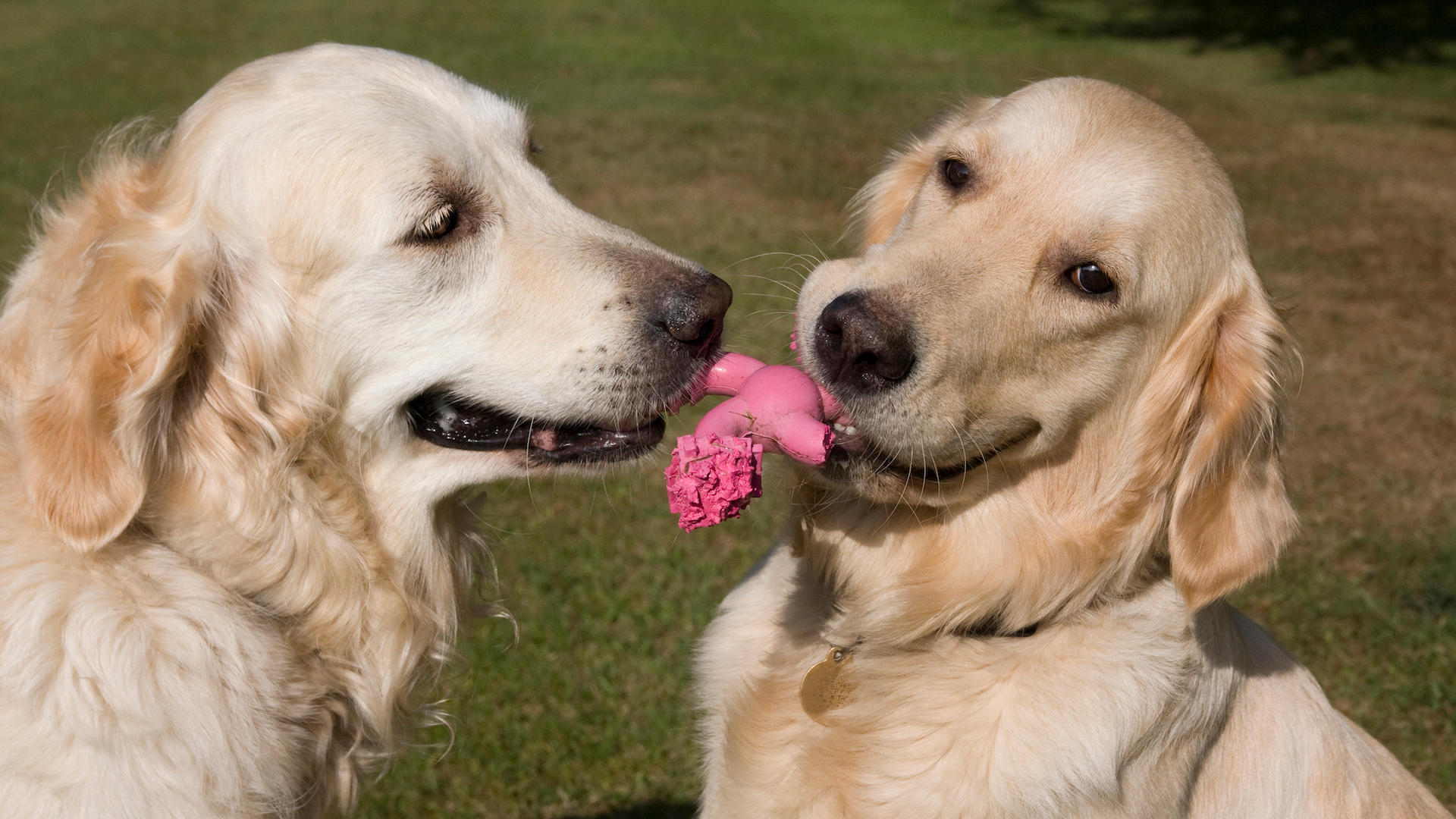
Golden retrievers are known as adorable family companions, but they are needy on the attention front. If you leave them alone for too long, they may well take their grievances out on the house, destroying whatever they can find to take to pieces.
Also, as their name indicates, they are bred to retrieve – by putting fallen game in their mouth. And this instinct lives on even in a domestic situation; they just need to learn what is appropriate to pick up.
Keep a Golden retriever busy in mind and body, and they’re much less likely to seek chewing outlets for their energy.
10. Weimaraner
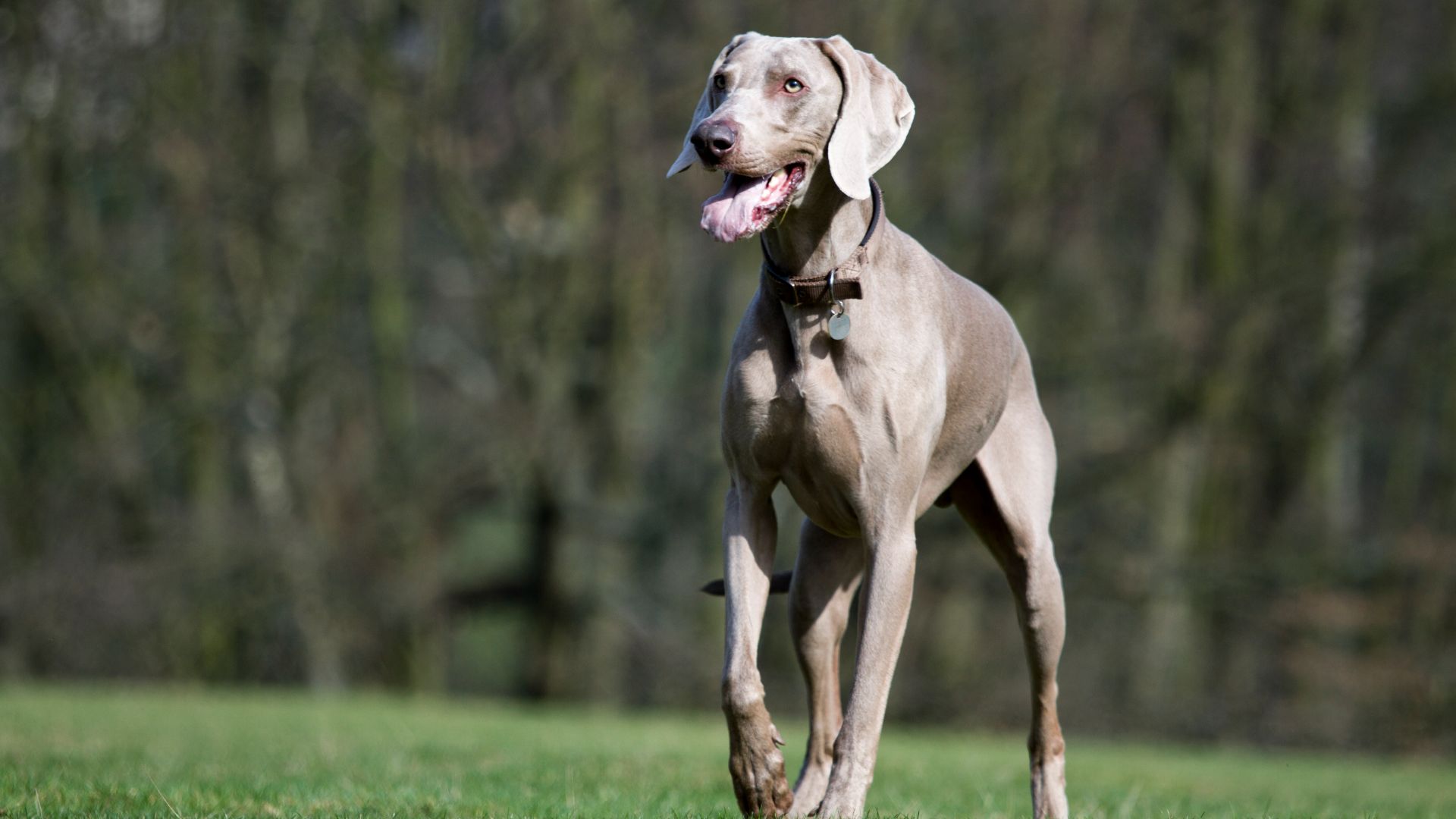
The Weimaraner is a large, strong dog with retriever origins and oodles of energy. All these ingredients are a recipe for an instinctive chewer.
They love to carry all sorts of things – pebbles, toys, sticks, and stones – in their mouth, they crave attention and company, and they need to expend large amounts of energy. Chewing, to a Weimaraner, is the obvious solution.
11. American Bulldog
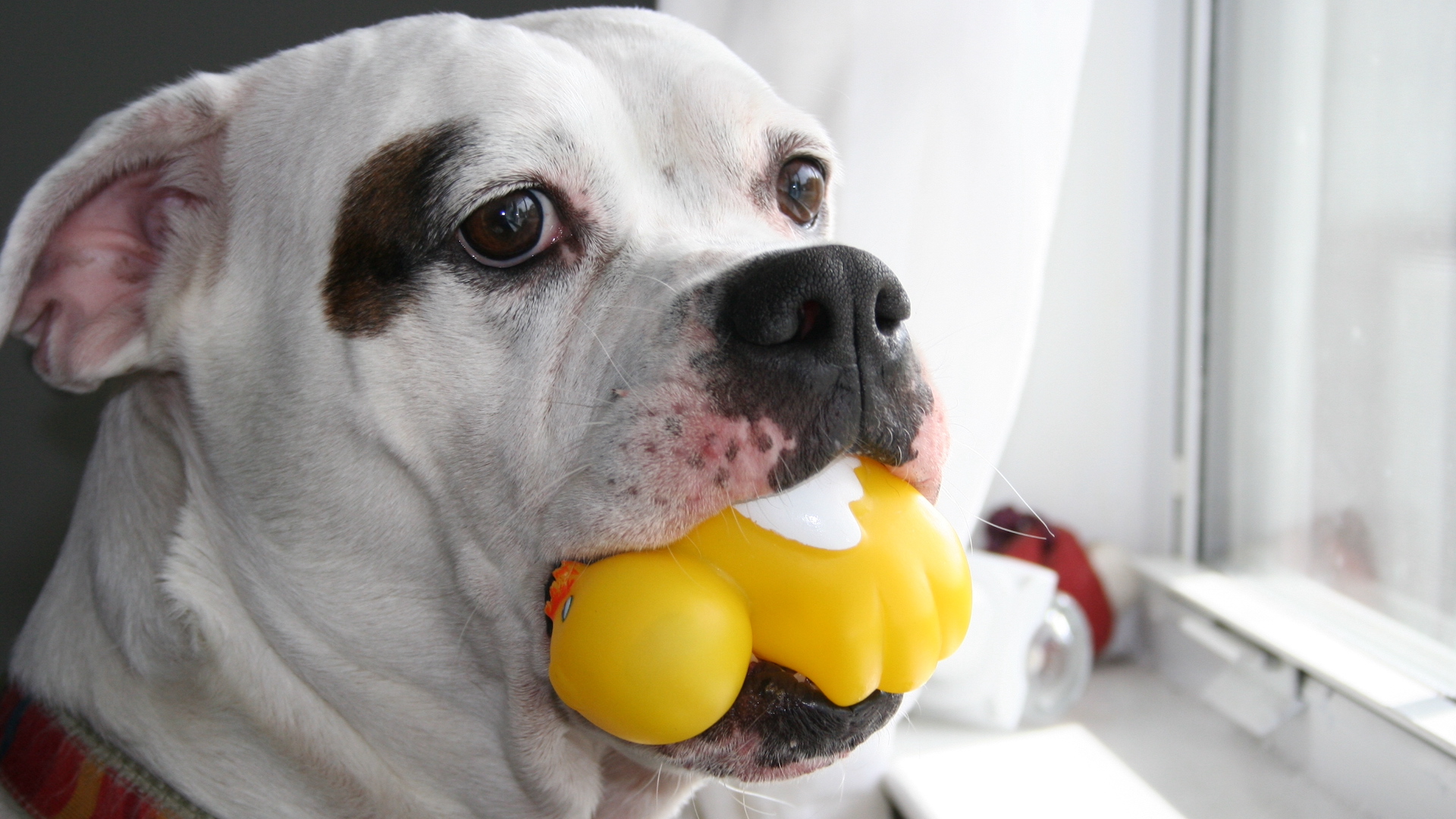
Similar to the English version, the American Bulldog has a large and powerful jaw, which makes it a powerful chewer. Bred as a working dog, the American is bigger in size and a more athletic type, which means it needs to discharge unspent energy.
A lovable juggernaut, the American Bulldog does have a tremendous bite force due to its physique, so it’s extra important that owners channel that hardworking energy.
12. Rhodesian Ridgeback
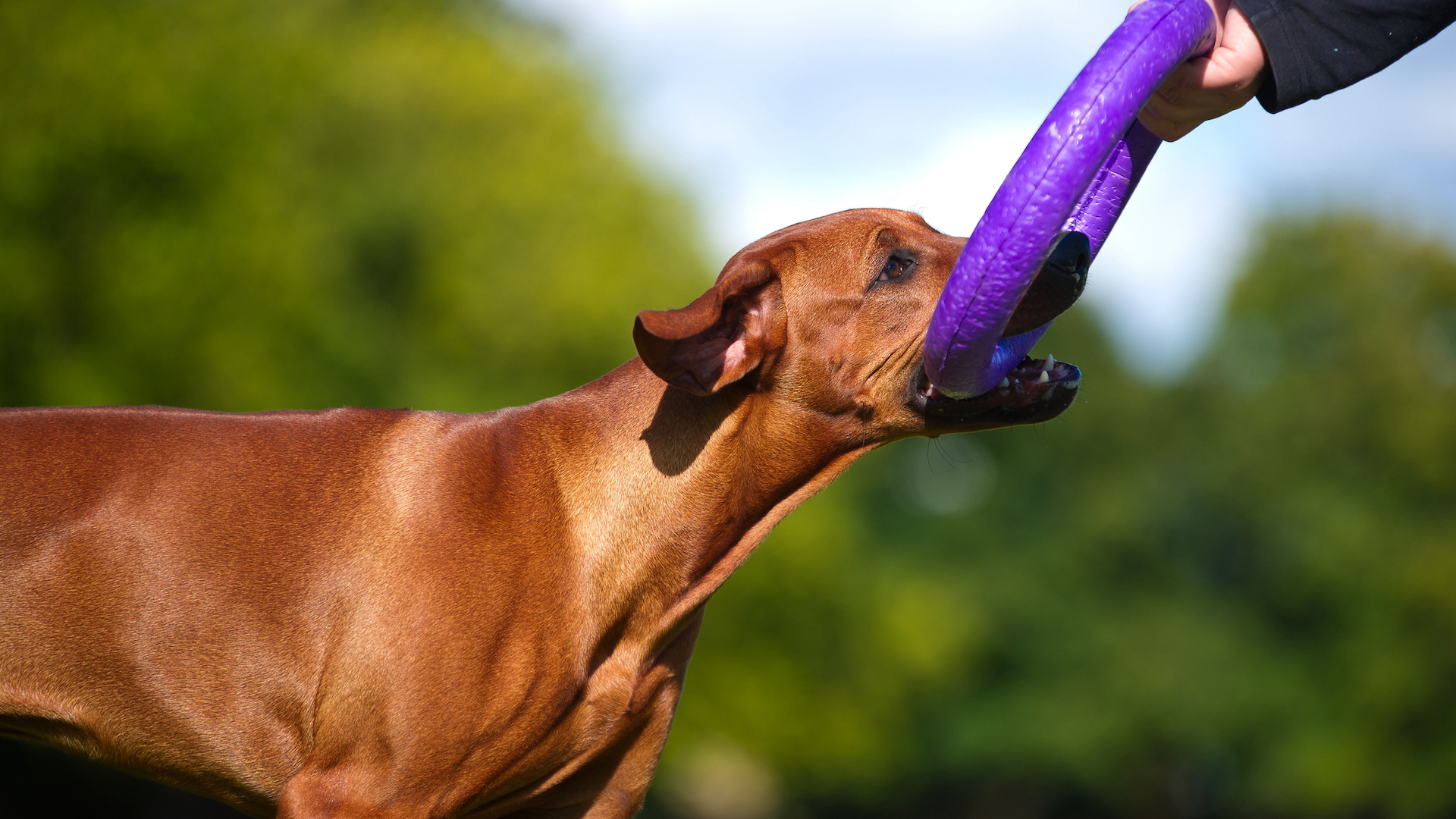
The Rhodesian Ridgeback is a fabulous physical specimen – strong, athletic, and powerful. This gives these striking dogs the ability to run for hours, true to their origins, hunting, pursuing, and bringing down large game in the African wilderness. This strength also translates to their chewing abilities.
Their jaws are extremely powerful, and their natural inclination for athleticism and stamina means they need plenty of stimulation to keep their mind and body healthy, preventing them from discharging their energy into destructive chewing.
13. Hungarian Vizsla
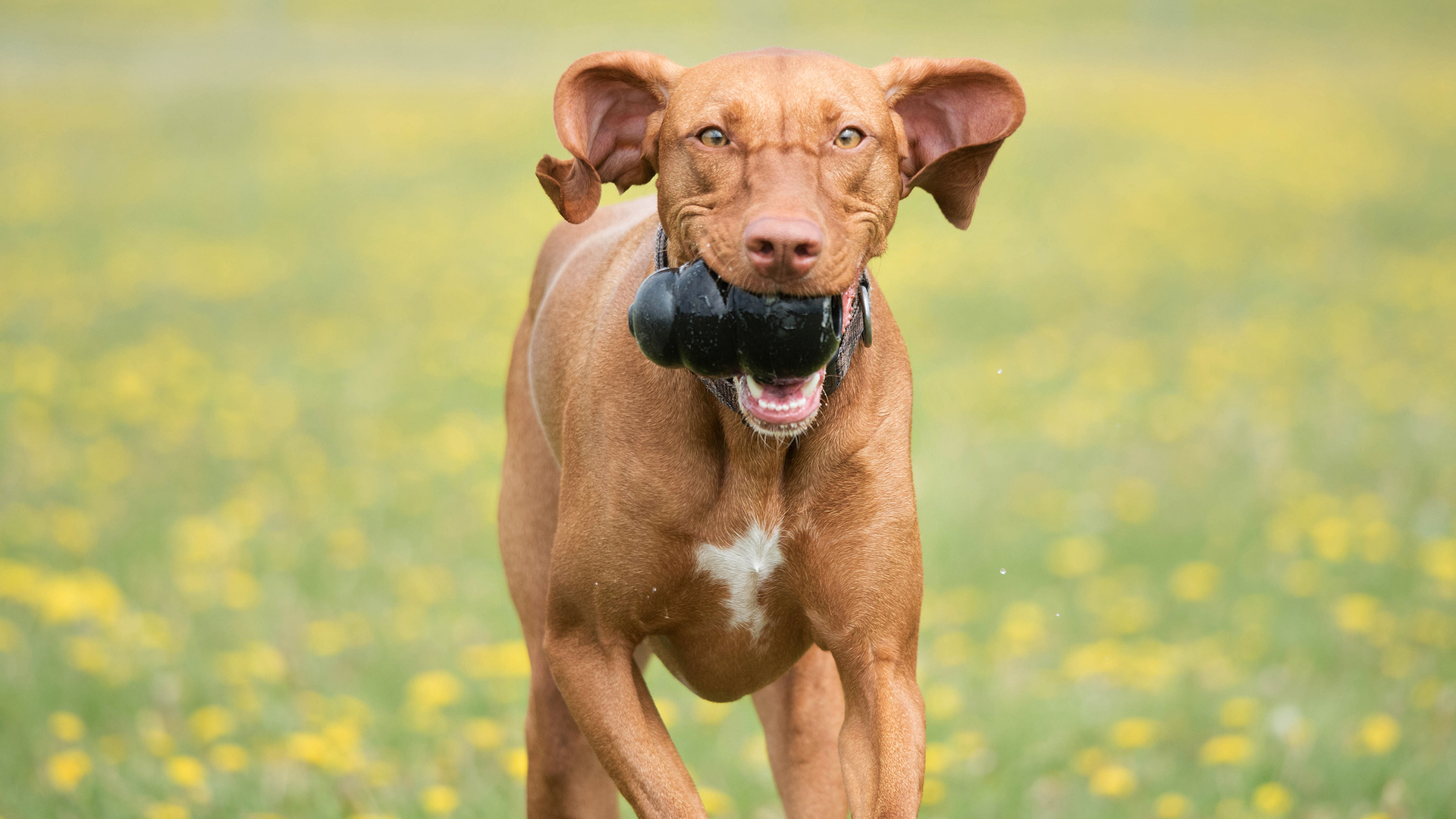
The Hungarian Vizsla is known for its playfulness and high energy. It also has strong “Velcro” tendencies, meaning it sticks to its owner and often frets when left alone. Plus, it’s bred to hunt, which means it naturally picks up things by mouth.
All of this adds up to a breed with a natural inclination to chew. If their high energy demands are not met, they may find other ways to amuse themselves (a tasty pillow, perhaps) or soothe their anxiety when left alone too long.
14. Basset hound
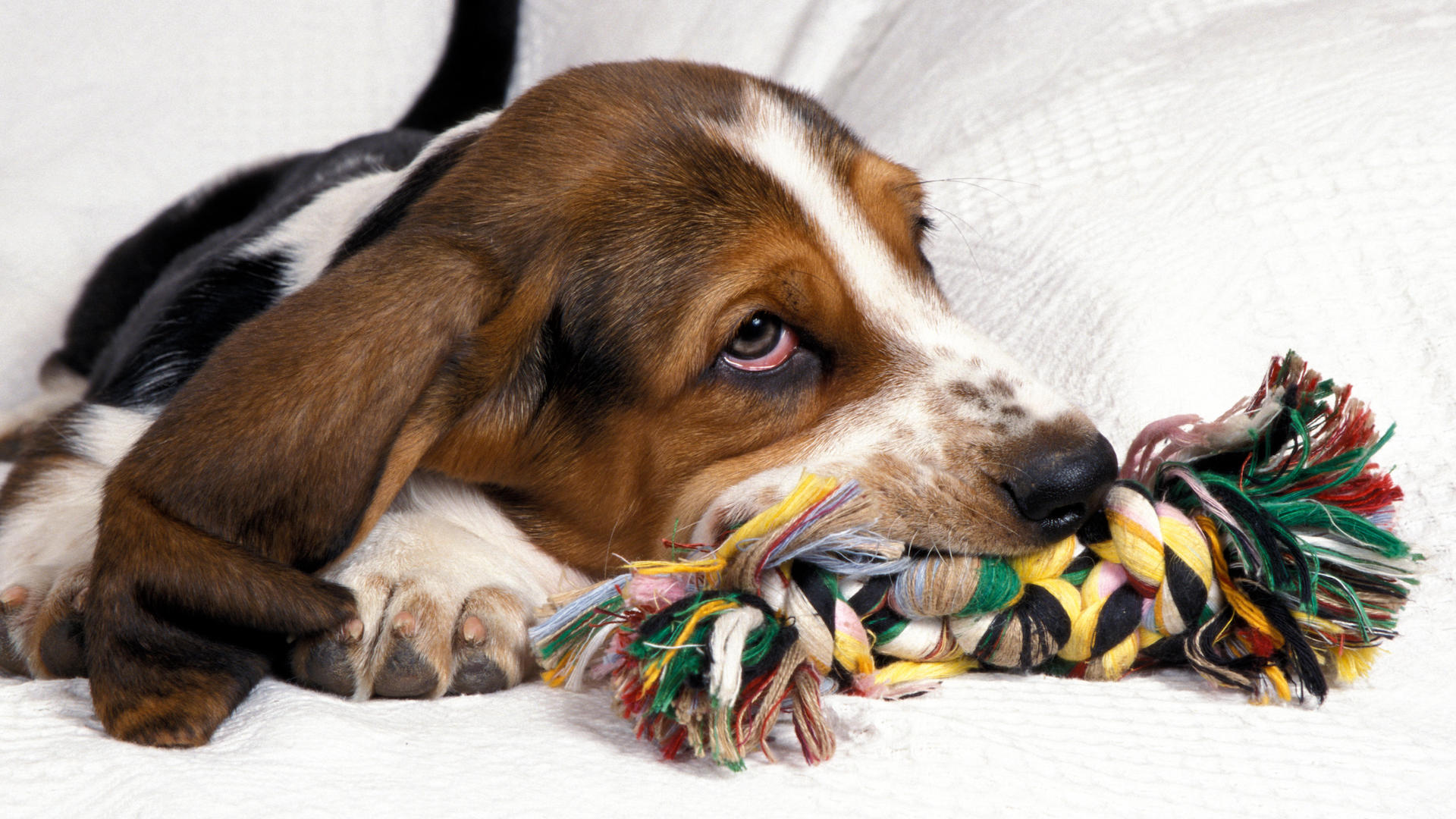
The delightful basset hound is known to be a big chewer, often even chomping on its own large, drooping ears.
Their low-slung, heavy physique belies the fact that although they don’t require the amount of high-level activity of some of the other scent hounds, they do need plenty of mental and physical stimulation.
If not, they will create their own distractions, which typically means chewing on whatever lies in their path.
15. Doberman Pinscher
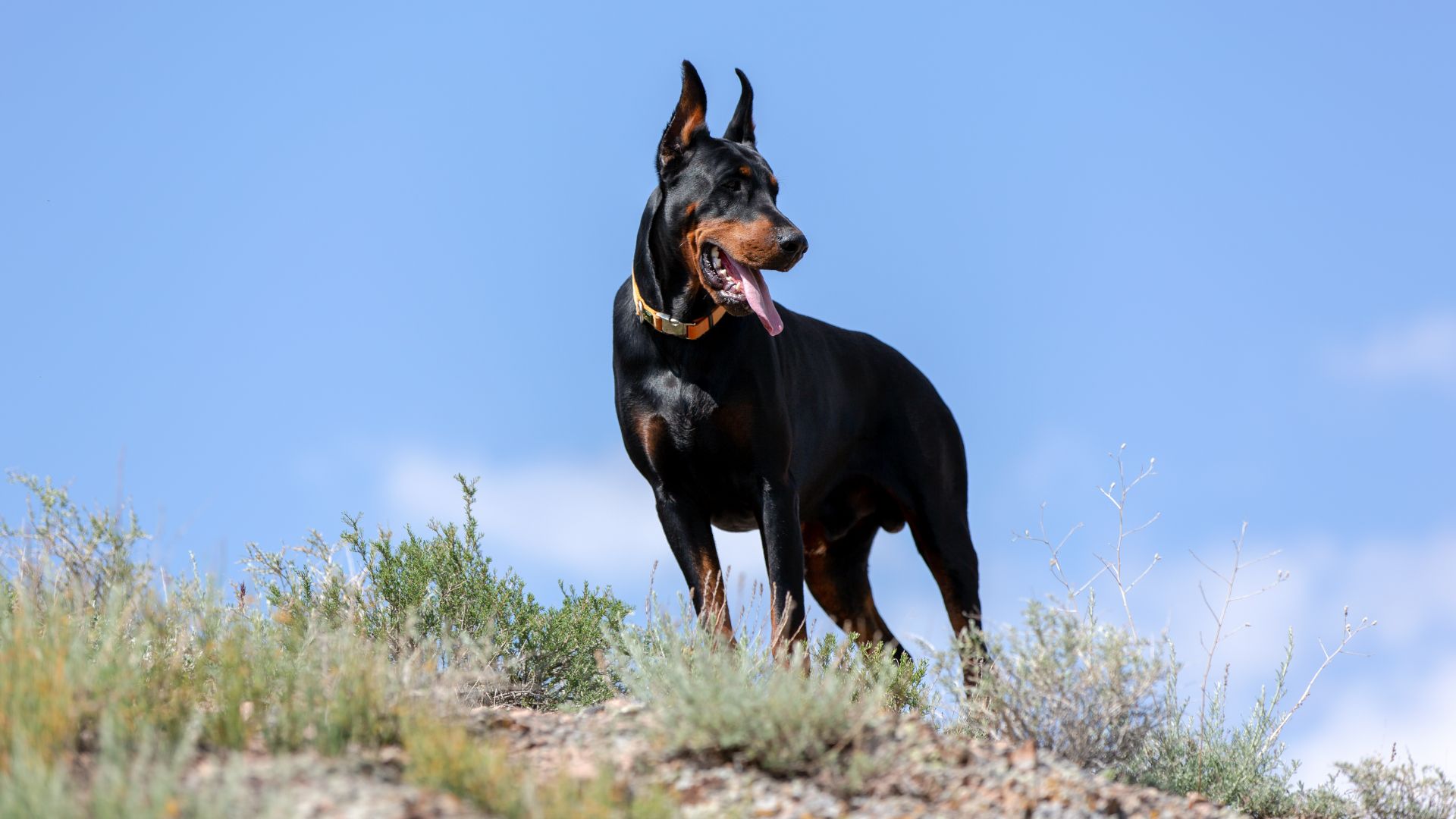
Dobermans are strong and powerful, with a natural instinct to chew and gnaw. Anxiety and boredom will exacerbate the chewing urge, as this is a breed that needs a lot of exercise and stimulation.
Given their neck and jaw strength, the Doberman can quickly destroy many household items, so keep a stock of chews for aggressive chewers on hand.
16. English Springer Spaniel
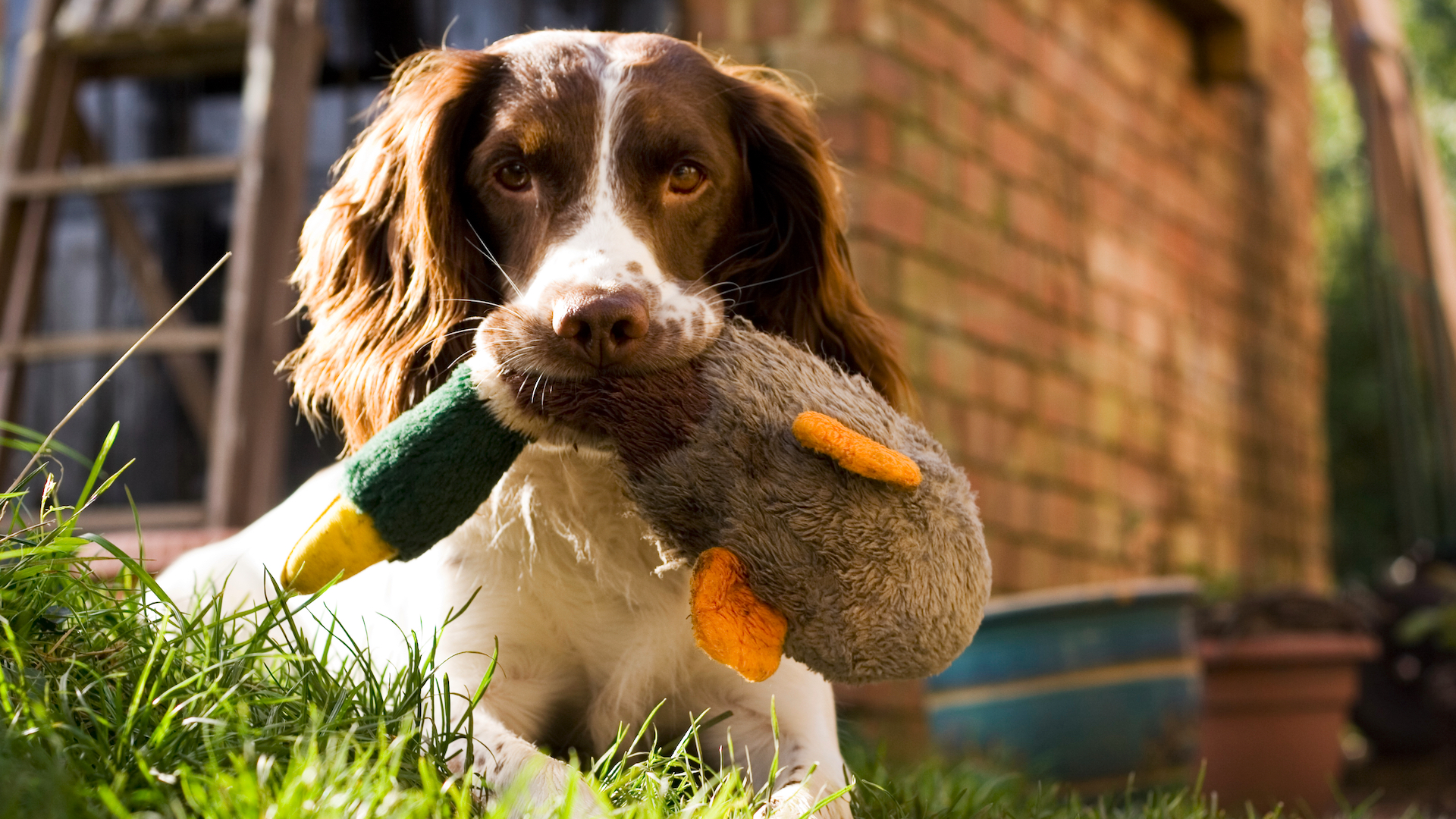
The springer spaniel is an endearing breed that does not have the strength and power of most of the big chewers, however, this determined gundog loves to carry anything in his mouth and is persistent.
So long as they have plenty of exercise and stimulation, you may be able to keep their chewing habit at bay, but they are easily bored and seeking entertainment.
17. Rottweiler
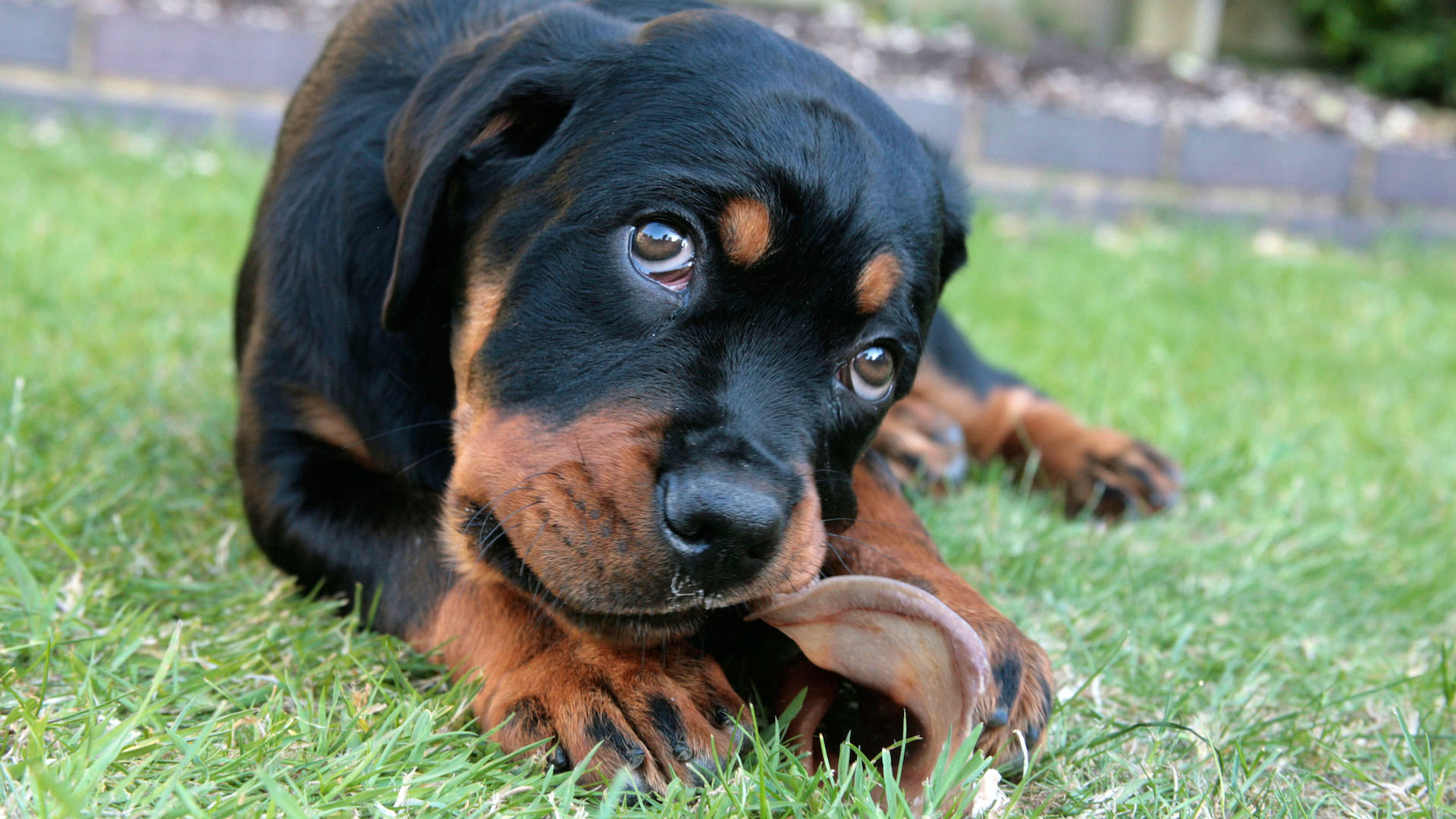
The Rottweiler shouts out strength and power with its imposing physique. They naturally have a powerful bite and strong chewing instinct, so it’s little surprise this is a breed renowned for destructive chewing habits, without training.
As a working dog, they need to use their mind and body to ward off frustration and stress – chewing can be an outlet for this.
18. German Shepherd
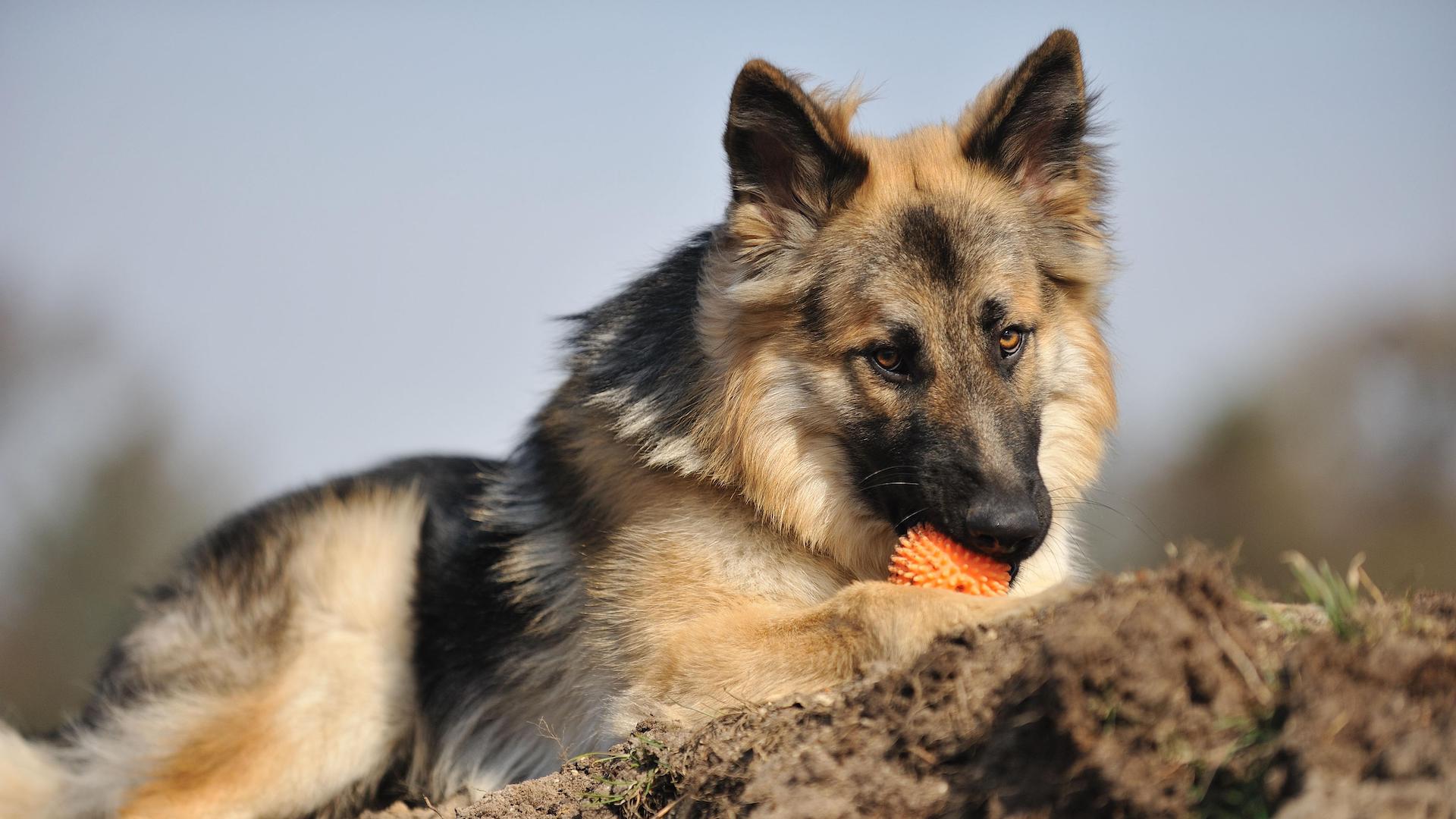
German Shepherds can go through chew toys at a rate of knots! They have a strong work drive, athletic physique, and powerful bite force, which makes them notoriously demanding on their toys.
These heavy-duty chewers tend to love exercising their strong jaws throughout their life, not just in the puppy phase, and it serves as a useful distraction, reducing stress and providing mental stimulation.
19. Australian Shepherd
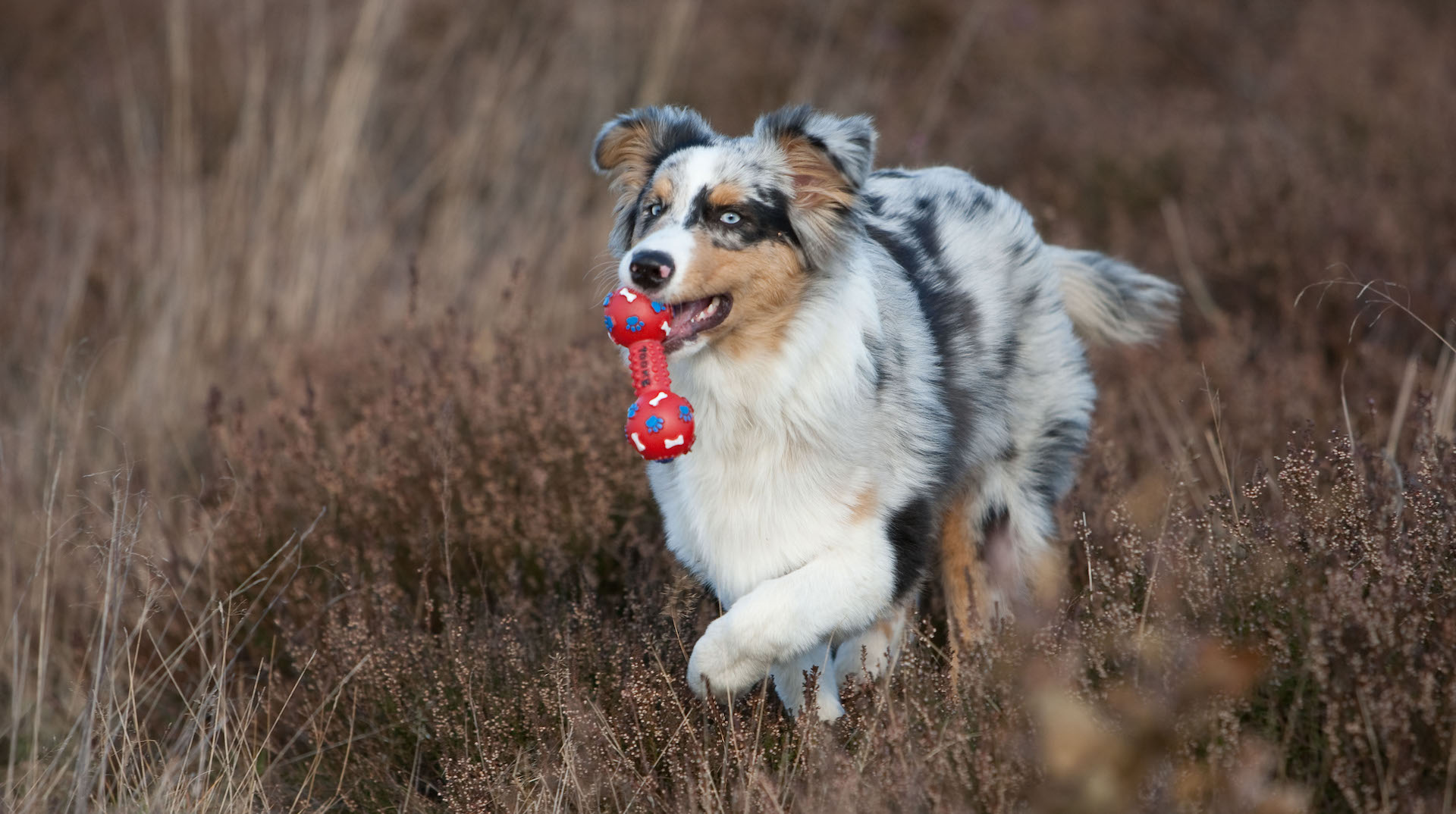
Although Australian Shepherds are not as large and powerful as some of the very strong-jawed dogs, they are prone to destructive chewing. They’re natural high-fliers, high-energy, workaholics – and if they don’t have the opportunity to make the most of those traits, they’ll seek alternative habits to satisfy them.
These intelligent dogs are also one of the breeds most likely to suffer separation anxiety, and some resort to gnawing through the furniture in protest.
20. Dalmatian
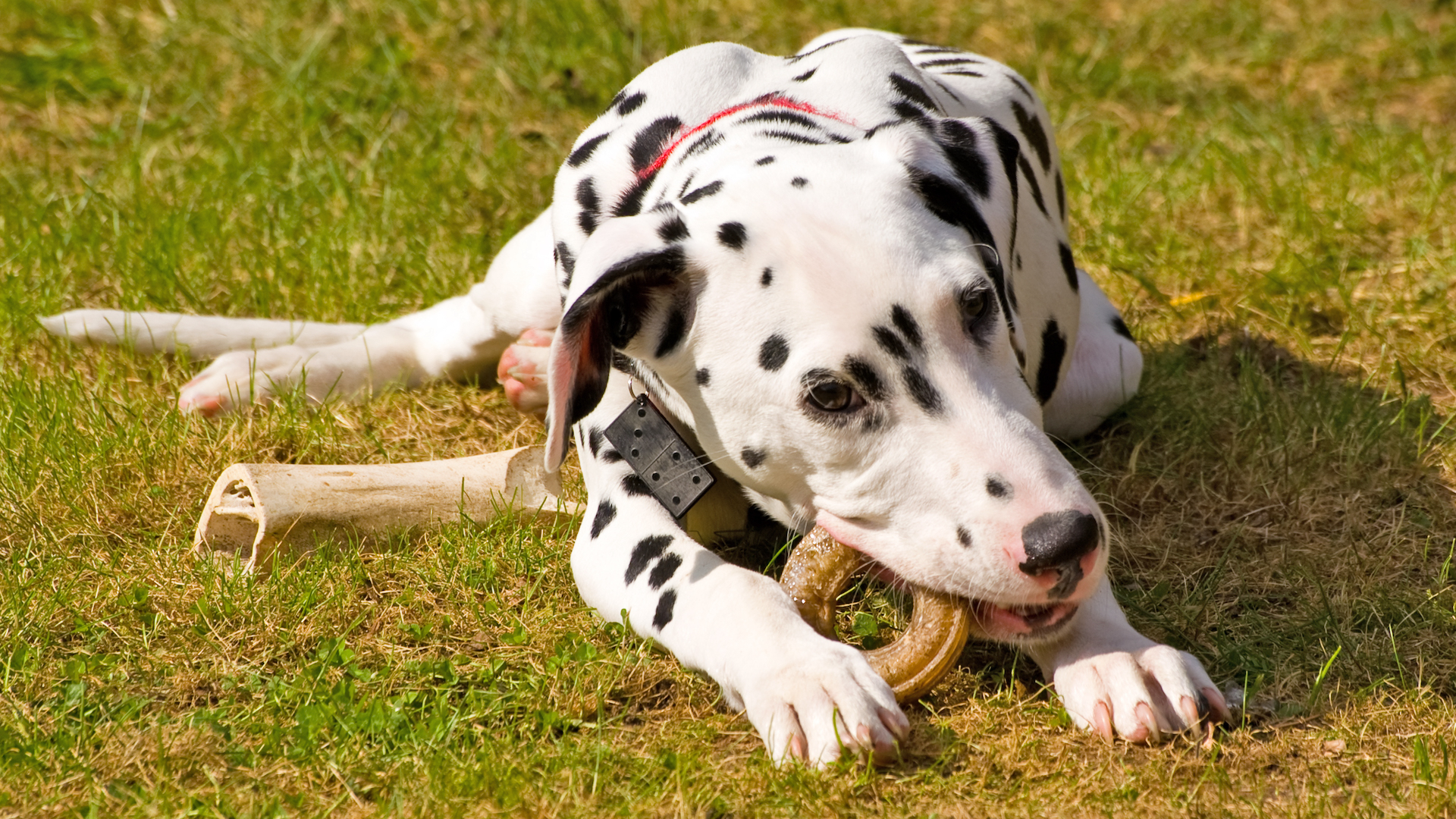
This high-energy breed can be a strong chewer to relieve stress, anxiety, or boredom. Dalmatians also love attention and, as a playful type, may resort to chewing to get a reaction from their owners.
Why do dogs chew?
In the wild, chewing is normal survival behavior within the pack, where dogs would chew on bones to extract every last nutrient, while also developing their jaws for hunting. In a domestic setting, all puppies love to chew, as it helps relieve the pain of their teeth coming through.
It’s also a way of exploring their surroundings. Whereas we’ll use our hands, a dog uses his mouth to investigate and learn about their environment, which often means picking objects up and gnawing on them.
Chewing is useful for a dog’s oral hygiene. Chomping on one of the best dental chews can help remove plaque and tartar from their teeth, keeping them clean and strong.
One of the major triggers for chewing, which can veer into the destructive zone, is to relieve boredom and stress. Busy dogs that love a job can find inactivity very dull. They need plenty of stimulation to satisfy their whirring minds.
If they don’t get sufficient mental and physical activity, they often resort to chewing as an outlet for all that energy. Typically, the bigger the dog, the stronger their gnawing capacity. Long-lasting dog chews are handy for these breeds.
So, we’ve established that chewing plays important roles in canine physical, mental, and behavioral health. All dogs innately like to chew, but which are the dogs that chew the most?
“I don’t think there is an exact measure as to which breeds chew the most,” Dr MacMillan adds. “Owners should bear in mind that even a small dog might have a good go at a slipper or stuffed toy occasionally. All dogs must be provided with appropriate chew toys or treats to let them carry out this natural instinct as they wish.”
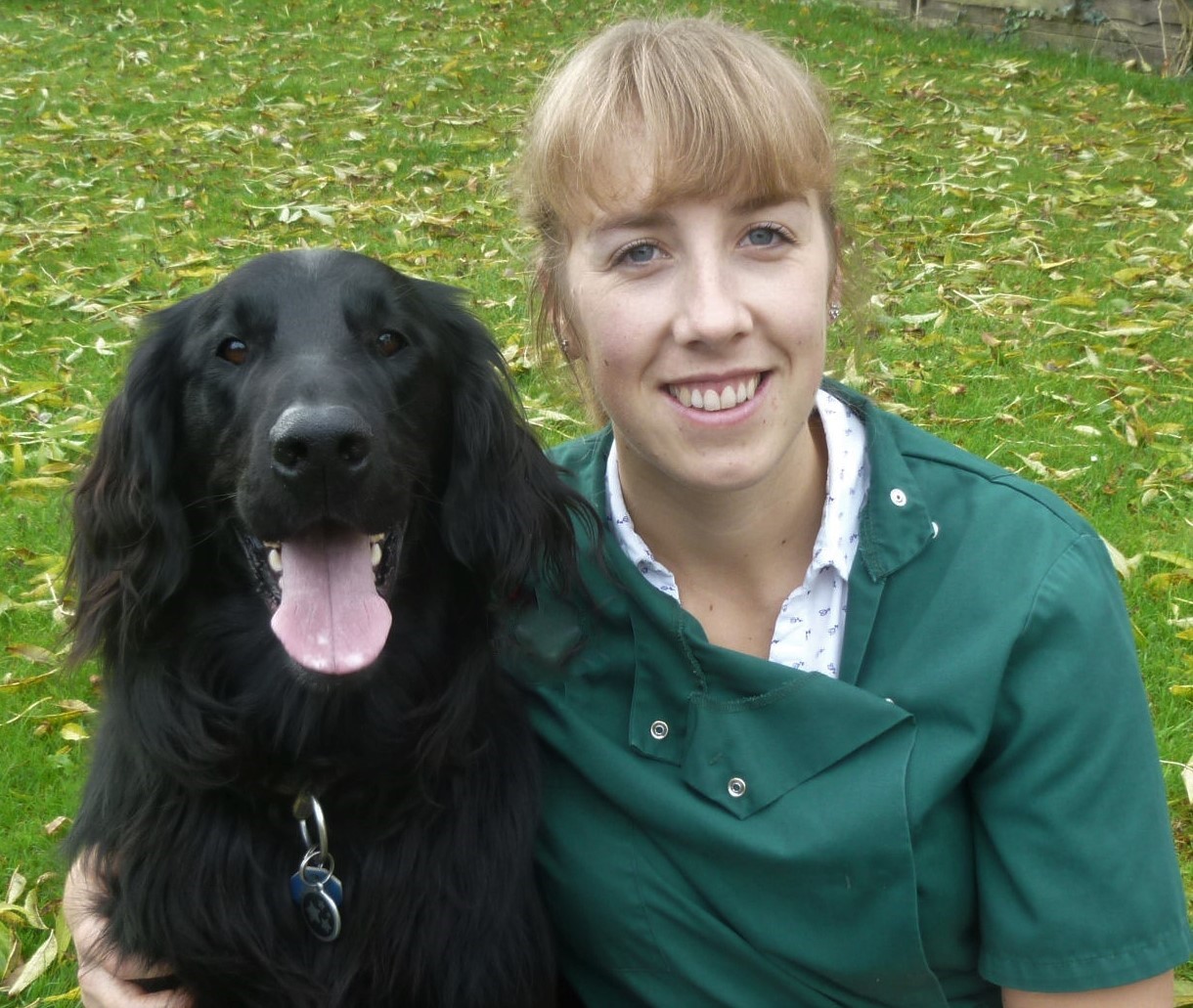
Rebecca is a veterinary surgeon who graduated in 2009 from the Royal Veterinary College in London. She has a wealth of experience in first opinion small animal practice, having done a mixture of day-to-day routine work, on-call emergency duties and managerial roles over the years. Rebecca enjoys medicine in particular and she is proud to have recently achieved a BSAVA postgraduate certificate in small animal medicine (with commendation).
She writes on various feline and canine topics, including behavior, nutrition, and health. Outside of work and writing she enjoys walking her own dog, spending time with her young family and baking!
Edited by Georgia Guerin and Alexis de Leaver.
This feature was last updated in May 2025 by Martha Terry.
Get the best advice, tips and top tech for your beloved Pets
Martha is an experienced journalist working in both print and digital media. She specializes in the canine, equine and rural sphere where she has covered a wide range of topics from cloning animals and the ingredients for a perfect yard dog, to helping owners find the best canine GPS trackers on the market. When she’s not busy writing about dogs and horses, she’ll be found either aboard a horse or looking after the menagerie of pets in her care.
